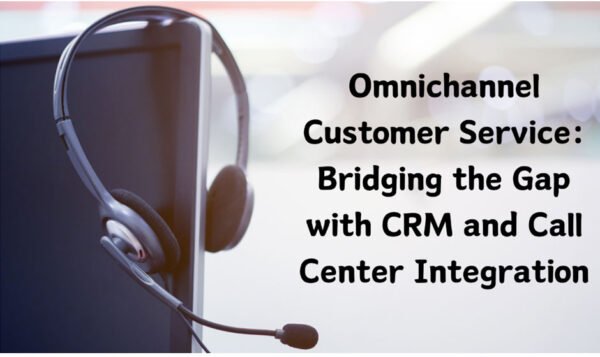Optimizing User Interaction through Email Strategies

Using email strategies to optimize user interaction requires a thoughtful and strategic approach. This article will explore best practices to enhance user interaction, drive engagement, and achieve the desired outcomes through email campaigns.
23 Key Strategies to Optimize User Interaction through Email
1. Segmentation and Personalization
Effective email strategies begin with understanding your audience. Segmentation allows you to categorize your email list based on specific criteria such as demographics, purchase history, or engagement levels. By tailoring content to different segments, you can create personalized and relevant messages that resonate with each group, increasing the likelihood of user interaction.
2. Compelling Subject Lines
The subject line is the first impression of your email. Crafting compelling and concise subject lines is crucial for capturing the recipient’s attention. Consider using intriguing questions, creating a sense of urgency, or offering a clear benefit to entice users to open the email.
3. Engaging Email Copy
Once opened, the email copy should be engaging and concise. Focus on delivering value to the reader. Use a conversational tone, address pain points, and highlight benefits. Break up the text with visuals, bullet points, and clear calls-to-action (CTAs) to guide users through the content.
4. Interactive Elements
Incorporating interactive elements in emails can significantly boost engagement. Experiment with features like clickable buttons, surveys, quizzes, or carousels. Interactive content encourages users to participate actively, providing a more dynamic and personalized experience.
5. Gamification Elements
Introduce gamification elements to make your emails more interactive and engaging. Include quizzes, challenges, or contests that encourage users to participate actively. A gamified email signup form can capture attention and create a sense of fun and excitement.
6. Mobile Optimization
With most users accessing emails on mobile devices, optimizing emails for mobile responsiveness is non-negotiable. Ensure your email design, images, and CTAs are mobile-friendly to deliver a seamless experience across different devices.
7. Clear and Compelling CTAs
The CTA is a pivotal element in driving user interaction. Make your CTAs clear, compelling, and action-oriented. Use persuasive language and place CTAs strategically throughout the email, guiding users toward the desired actions.
8. Social Media Integration
Leverage the power of social media by integrating share buttons and social media icons in your emails. Encourage users to share your content on their social platforms, expanding your reach and fostering community engagement.
9. A/B Testing
A/B testing is a valuable tool to refine your email strategies. Test elements such as subject lines, content, visuals, and CTAs to understand what resonates best with your audience. Use the insights gained to optimize future email campaigns for maximum impact.
10. Personalized Recommendations
Implement personalized product or content recommendations based on user’s preferences and behaviors. Machine learning algorithms can analyze user data to suggest relevant products, articles, or services, creating a tailored experience that enhances user engagement.
11. Behavioral Triggers
Utilize behavioral triggers to send automated, timely emails based on user actions. Triggered emails can nurture user relationships by delivering relevant content at the right moments, whether a welcome email, abandoned cart reminder, or post-purchase follow-up.
12. User-Generated Content
Add user-generated content to your emails to build authenticity and community engagement. Feature customer reviews, testimonials, or images shared by users. Not only does this create social proof, but it also encourages others to participate and share their experiences.
13. Storytelling in Emails
Tell compelling stories in your emails to create an emotional connection with users. Whether it’s your brand’s story, customer success stories, or narratives around your products, storytelling adds a human touch and captures the audience’s attention.
14. Email Surveys and Feedback
Seeking feedback through email surveys is an excellent way to engage users and gather valuable insights. Use surveys to understand customer satisfaction, and preferences, or to collect suggestions for improvement. Make it easy for users to provide feedback directly within the email.
15. Progressive Profiling
Implement progressive profiling to gather additional user information gradually over time. Instead of asking for extensive details upfront, use progressive profiling to build a more comprehensive user profile through targeted questions across multiple interactions.
16. Leverage User Data
Leverage user data to personalize not just the content but also the timing of your emails. Analyze data such as user location, past engagement patterns, and time zone preferences to send emails at optimal times, increasing the chances of visibility and interaction.
17. Create Urgency and Scarcity
Incorporate elements of urgency and scarcity in your email campaigns to prompt immediate action. Limited-time offers, exclusive deals, or countdowns can create a sense of urgency, motivating users to engage promptly.
18. Subscription Management
Provide users with the option to manage their subscription preferences. Allow them to choose the frequency of emails, select specific topics of interest, or opt out. This level of control enhances the user experience and reduces the likelihood of unsubscribes.
19. Dynamic Content
Implement dynamic content that adapts based on user behavior, preferences, or demographics. Tailoring content dynamically ensures that each user receives personalized information, increasing the relevance of your emails and enhancing overall engagement.
20. Email Drip Campaigns
Implement email drip campaigns for a more strategic and automated approach to user engagement. Drip campaigns allow you to send targeted emails over time, nurturing leads, providing educational content, and guiding users through the customer journey.
21. Social Proof and Testimonials
Incorporate social proof and testimonials in your emails to build trust with your audience. Highlight positive reviews, and testimonials from satisfied customers, or showcase user-generated content that reflects a positive sentiment towards your brand.
22. Smart Segmentation for Behavioral Targeting
Refine your segmentation strategy with behavioral targeting. Analyze user behavior, such as website visits, clicks, and past interactions with your emails. Use this data to create segments for more precise targeting, delivering content that aligns with users’ interests and activities.
Conclusion
Optimizing user interaction through email strategies requires a holistic and user-centric approach. Businesses can create email campaigns that capture attention and foster meaningful connections with their audience by incorporating segmentation, personalization, engaging content, and leveraging emerging trends.



